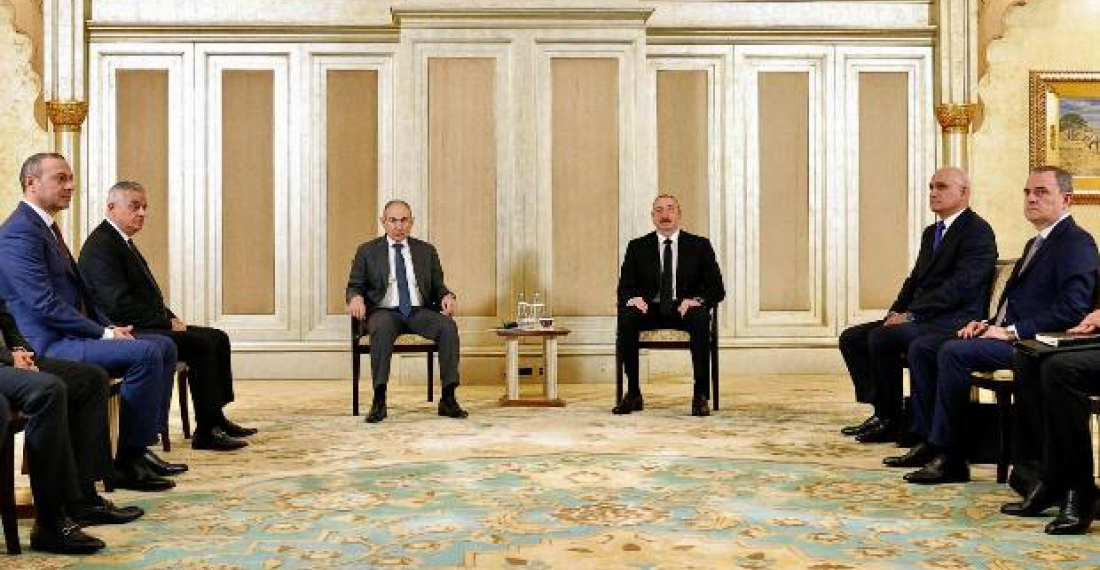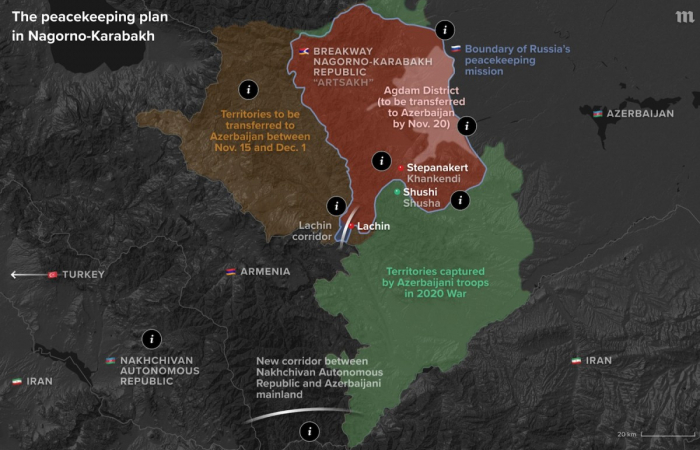Azerbaijan and Armenia are expected to sign a memorandum of understanding in Washington on Friday 8 August, committing to the pursuit of peace, according to regional sources who spoke to Middle East Eye (MEE). The move commits the two countries to a future peace deal amid increasing US influence in the South Caucasus. The sources said that US President Donald Trump will host Azerbaijani President Ilham Aliyev and Armenian Prime Minister Nikol Pashinyan at the White House for the signing ceremony.
Although Armenia and Azerbaijan reached consensus on a draft peace agreement in March, Baku continues to insist on several additional conditions before finalizing the deal. Chief among Azerbaijan’s demands is that Yerevan amend its constitution to remove references to Azerbaijani territory, a step that would require a national referendum in Armenia.
The anticipated White House summit follows a meeting between the two leaders in Abu Dhabi in July. Following the meeting, Aliyev said both countries could finalize the text of the agreement, or at least its main principles, within a few months and then initial them.
“Reaching an agreement on the basic principles, initialing them, and then working on the text can be an option,” Aliyev said, emphasizing that such an approach hinges on Armenia amending its constitution.
The sources who spoke to MEE added that the two leaders are expected to sign a “letter of intent” rather than a draft peace agreement, providing Trump with a diplomatic achievement he has been seeking in the region since last month.
Azerbaijani Foreign Minister Jeyhun Bayramov called his Turkish counterpart Hakan Fidan on Monday 4 August to inform him about the summit, a third regional source told MEE. Turkish foreign ministry sources said that Fidan discussed bilateral and regional issues with Bayramov.
One of the main sticking points remains the so-called “Zangezur Corridor”, which would link mainland Azerbaijan to its exclave, Nakhchivan, through Armenian territory. Armenia rejects the term “Zangezur Corridor,” arguing that it carries irredentist implications for its sovereign territory, known as Syunik Province of Armenia.
Last month, US Ambassador to Turkey Thomas Barrack officially proposed that an American company could lease and operate the corridor for 100 years, aiming to address the concerns of both sides over security and reliability of the transport route. However, Armenia rejected the proposal, stating it would not lease its sovereign territory to any third country.
A regional source familiar with the negotiations told MEE that Turkey initially suggested the idea of a private company, approved by both Armenia and Azerbaijan, managing the corridor. “However, the Armenian side demanded that the company also operate on the Nakhchivan side of the corridor, which was unacceptable to Baku,” the source explained.
Following the dissolution of the Soviet Union in 1991, Armenia and Azerbaijan declared independence, leading to a full-scale war over Nagorno-Karabakh. The conflict resulted in significant casualties and displacement, with Armenians gaining control over Nagorno-Karabakh and surrounding territories. A ceasefire was declared in 1994, but no comprehensive peace agreement was reached. The area remained de facto Armenian-controlled but internationally recognized as part of Azerbaijan.
Since the ceasefire, the region has experienced periodic clashes, diplomatic stalemates, and attempts at negotiations. The situation was maintained largely through a fragile ceasefire and international mediation efforts, primarily led by the Minsk Group of the OSCE.
In September 2020, hostilities resumed with a six-week war that resulted in significant territorial gains for Azerbaijan, including reclaimed areas around Nagorno-Karabakh. A Russia-brokered ceasefire was signed in November 2020, leading to Azerbaijan controlling parts of the territory, and the region’s status remains unresolved, with deep-seated grievances on both sides.






